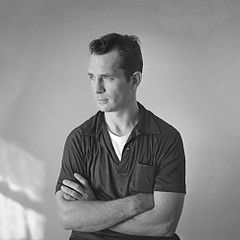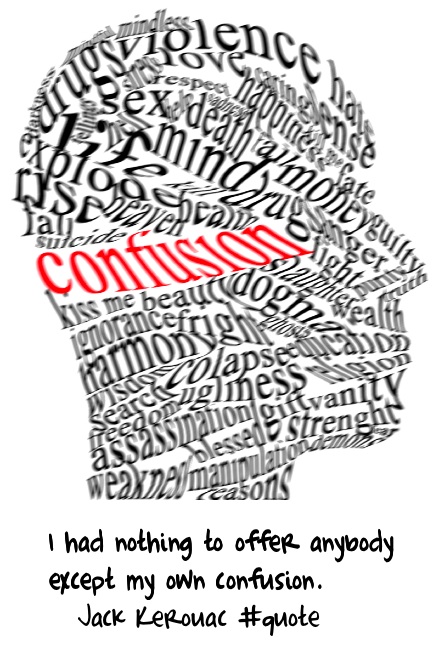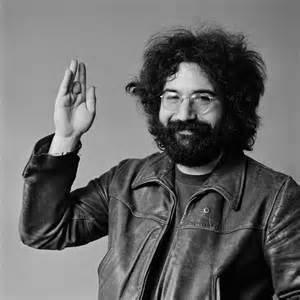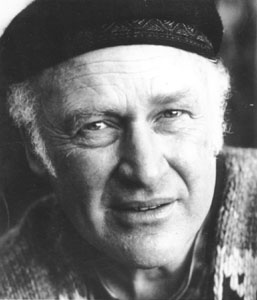#larry_keenan#photography#cassady#ken_kesey#ana_christy#beatnikhiway.com
Tag Archives: Ken Kesey
COOL PEOPLE -KEN KESEY and Alison Ellwood Captures The “MAGIC TRIP” Of Ken Kesey
Ken Kesey
American writer, who gained world fame with his novel One Flew Over the Cuckoo’s Nest (1962, filmed 1975). In the 1960s, Kesey became a counterculture hero and a guru of psychedelic drugs with Timothy Leary. Kesey has been called the Pied Piper, who changed the beat generation into the hippie movement.
Ken Kesey was born in La Junta, CO, and brought up in Eugene, OR. Kesey spent his early years hunting, fishing, swimming; he learned to box and wrestle, and he was a star football player. He studied at the University of Oregon, where he acted in college plays. On graduating he won a scholarship to Stanford University. Kesey soon dropped out, joined the counterculture movement, and began experimenting with drugs. In 1956 he married his school s…more
Alison Ellwood Captures The “MAGIC TRIP” Of Ken Kesey
& the Merry Pranksters’
http://youtu.be/irgq4NP8zWs
COOL PEOPLE -COUNTERCULTURE HEAVYWEIGHTS
Counterculture Heavyweights

Beatniks, Hippies, Artists and Stars
Certain creative types made names for themselves in post-war America as rebels against the status quo. With all-American war hero Dwight Eisenhower in the White House, these cultural expatriates discovered each other in San Francisco or New York’s Greenwich Village, experimented with drugs and alternative lifestyles — and sometimes published works of great renown. Here are a few of these legends of the American counterculture.

Jack Kerouac
JACK KEROUAC‘s 1957 book On the Road remains a counterculture cornerstone. Kerouac typed the novel during three marathon weeks in 1951, then struggled for six years to get it published. The book recounts Kerouac’s cross-country ramble with fellow drifter Neal Cassady and their encounters with hobos, junkies and other mainstream dropouts. The manuscript for On the Road, typed onto strips of paper pasted together into one long scroll, was sold at auction in May 2001 for $2.2 million.
Ken Kesey
One Flew Over the Cuckoo’s Nest author KEN KESEY also traveled cross-country with Neal Cassady. In 1964 the two men and other “Merry Pranksters” boarded an old schoolbus painted in psychedelic colors and drove from California to New York to celebrate the publication of Kesey’s second novel, Sometimes a Great Notion. They named the bus Further and along the way they made friends, threw parties, performed impromptu rock concerts and experimented with LSD. The trip was immortalized by Tom Wolfe in his book The Electric Kool-Aid Acid Test.
Jerry Garcia
Ken Kesey was a fan and patron of a San Francisco band called The Warlocks. The band was later renamed the Grateful Dead and its leader, JERRY GARCIA, became an enduring star. As years went by the Grateful Dead’s perpetual concert tours (featuring Garcia’s famously long-winded guitar solos) became a magnet for aging hippies and for youngsters who wanted to relive the tie-dyed splendor of the 1960s. By Garcia’s death in 1995, the Grateful Dead had somehow made the counterculture into big business, ranking annually as one of the world’s top-grossing concert acts.
Counterculture Heavyweights

Timothy Leary
TIMOTHY LEARY coined one of the best-remembered phrases of the 1960s: “Turn on. Tune in. Drop out.” As a psychologist working at Harvard, Leary studied LSD’s effect on volunteers; after the drug was made illegal he continued to publicly celebrate its mind-altering effects. Leary was arrested in 1972 for possession of marijuana and briefly fled the country, but by then he had become so famous for his radical views that President Richard M. Nixon had called him “the most dangerous man in America.”
Richard Brautigan
RICHARD BRAUTIGAN made his literary reputation in San Francisco in the 1960s with poems, short stories and novels.Trout Fishing in America, his satirical look at the condition of the environment, was written in 1961, but not published until 1967. It became a national bestseller and a manifesto of sorts across college campuses, and assured Brautigan a place in literature amid the Beats and the Hippies. His other works include the novels A Confederate General From Big Sur (1964) and In Watermelon Sugar (1968), four volumes of poetry and a short story collection, Revenge of the Lawn: Stories, 1962-1970 (1971).
Edward Abbey
EDWARD ABBEY grew up on a Pennsylvania farm and studied at the University of New Mexico before going to work for the National Park Service. In his nonfiction account of his time in Utah, Abbey reflected on the beauty of the desert and the damage done to it by humans. The book, Desert Solitaire, was published in 1968 and eventually became an honored guide for the environmental movement. His other best known work is the novel The Monkey Wrench Gang (1975), a rallying cry for activists who abhor the negative effects of industrialization.
Writers who partied: The myth of the lonesome author destroyed
KEN KESEY’S SON IS PLANNING A SEQUEL TO HIS DAD’S LEGENDARY,ACID FUELED BUS TRIP
May 20 201
Photo of the new bus courtesy of the Kickstarter page
In 1964, Ken Kesey—intrepid psychedelic traveler and author of One Flew Over the Cuckoo’s Nest—piled into a multicolored school bus with his friends and a bunch of drugs and drove from La Honda, California, to New York City for the premiere of Kesey’s new novel. The gaggle of proto-hippies traveling with Kesey were dubbed the “Merry Pranksters,” and their goal was to freak the fuck out of Middle America and document the whole thing for a feature-length film.
The movie they wanted to make never quite came to fruition, but the trip, and the Pranksters’ subsequent LSD antics, were cemented in history in Tom Wolfe’s 1968 book, Electric Kool-Aid Acid Test.
This year marks the 50th anniversary of the iconic Prankster adventure, and Kesey’s son, Zane, is looking to raise $27,500 to take the Pranksters’ psychedelic trip all over again. The original 1939 Harvester bus—named “Furthur”—is currently rusting in a swamp behind the Kesey Farm in Oregon, but Zane has a new one, and it’s even more decked-out than the original. If you want to get on the bus, you can donate $200 or more to be considered for the trip. And if you were off the bus in the first place, as Kesey once said, then it won’t make a damn.
If the Kickstarter hits its goal the new bus with its new Pranksters will be swinging through America later this summer. I called up Zane to learn a little more about the trip.
VICE: Hey, Zane. How long has the Kickstarter campaign been going on?
Zane Kesey: Like three weeks. We’re around halfway to our goal and have a week left.
Do you already know who will be onboard?
There have been 20 or 30 applications sent in. If you donate $200, we’ll give you a bunch of cool Prankster stuff—but you also get to apply to ride on the trip with us, be part of the movie that we’re making, and become a Merry Prankster. Even if we don’t choose you, we’ll still send you a Merry Prankster laminate. It will get you on the bus whenever we go parading through your town.
I know you haven’t planned the whole journey out yet, but are any stops lined up?
We’re going cross-country and hitting a few really good festivals along the way. Lockn’ Festival in Virginia is a big one. Furthur, the Grateful Dead side project that is named after the bus, is playing.
That’s cool.
We’ll be at their only concert this year, at the final Allman Brothers concert, and then at Phases of the Moon Festival in Illinois. Then we’ll head to this art festival called Great North up in Maine, which has the best artists from across the country. We’re hoping they will paint on the bus.
This isn’t the first Furthur bus, right? This is Furthur 2.0.
It’s not the 1939, no. This one is from 1947. My dad had it for a long time. He actually put way more miles on this one than he did on the original one… even took it to England and Ireland.
A lot of the toys on the bus—like the short-wave radio broadcaster—are either going to be fixed or upgraded. We want it to have WiFi so we can be working on the blog and posting pictures and videos from the road.

The original Furthur bus
What can people do to maximize their chances of making it onto the bus?
If you’re good at being a character or if you have equipment and want to come film, you’re going to rise to the top of the people we need. We also need people taking pictures for the blog and updating the website and blowing bubbles for the kids. All that stuff is really important.
Will riders be chosen for the whole stretch?
People will mostly be chosen for weeklong legs of the trip. So far there are only two or three of us who are essential. Derek Stevens is the tour manager. He is the one who talked me into this. I thought it was impossible, but after about a year of discussing it, he made it sound like it could really be fun.
Your dad’s original trip became a huge part of the story of the 60s. Will this new adventure be about preserving the legacy, or will it be a whole new chapter?
There are two different things that we’re after: One is we want to create a movie of us out there—having fun in the moment. We’re also trying to remind people of that innocent seed that started the 60s. The Pranksters weren’t out there trying to end the war or change the world; they were trying to have fun and go across the country just doing their thing.
Right.
In the 60s, everything was all so new and so fresh that it couldn’t be ignored. Now they don’t mind ignoring us at all. The hippie movement has fractured. People look at us now like we’re these dirty, confrontational people who just want to argue about government and taxes and the environment. That’s not necessarily where the movement started.
We need to get some of that innocence and fun and approachability back. Once we do that, we can reclaim some of the power that the 60s had.
The Furthur 50th anniversary Kickstarter ends on May 28. Donate here and hit the $200 mark for a chance to get on the bus.
Follow River Donaghey on Twitter.
a bit of personal history about Dave Christy and my involvement in the small press
Dave and Ana Christy
Boston Area Small Press and Poetry Scene

Doug Holder
This blog consists of reviews, interviews, news, etc…from the world of the Boston area small press/ poetry scene and beyond. Regular contributors are reviewers: Barbara Bialick, Lawrence Kessenich, Lo Galluccio, Zvi Sesling, Irene Koronas, Rene Schwiesow, Dennis Daly, and others. Founder Doug Holder: dougholder@post.harvard.edu. * B A S P P S is listed in the New Pages Index of Alternative Literary Blogs.
Home
About the Boston Area Small Press and Poetry Scene
Showing posts with label Dave Christy founder of the Alpha Beat Press Has Passed Away Doug Holder. Show all posts
Monday, February 08, 2010
Dave Christy founder of the Alpha Beat Press Has Passed Away…
I received notice that Dave Christy founder of the Alpha Beat Press has passed away. The press was very prolific and influential in the little magazine and chapbook scene in the 80’s and 90’s. I had my first chap published by Dave Christy: “Poems of Boston and Just Beyond: From the Back Bay to the Back Ward” May he rest in peace.
From the website:
Alpha Beat Press has been publishing Beat Generation, post-Beat Independent and other modern writings since 1986. Alpha Beat Press had its beginnings in a Montreal flat with the idea of keeping the aesthetics and sensibilities of the Beat generation alive. Our first magazine, Alpha Beat Soup was unique, being the only small press magazine publishing original and current Beat writings. In our new magazine Bouillabaisse and in our other poetry publications we have continued in that tradition, publishing a wide variety of writers and styles, from Bukowski to the lesser known poets. Alpha Beat Press is certainly the best of the small press!
Past Contributors include: John Clellan Holmes, Charles Bukowski, Beatrice Wood, Allen Ginsberg, Diane DiPrima, Carolyn Cassady, Gary Snyder, Carl Solomon, Ken Kesey, Simon Vinkenoong, Kaviraj George Dowden, John Montgomery, Jack Kerouac, Ken Babbs, Bruce Fearing, Ray Bremser, Al Aronowitz, Ana Christy, Gerald Nicosia, Diane Wakowski, Bob Kaufman, Steve Richmond, Janine Pommy Vega, Antler, Herbert Huncke, Pradip Choudhuri, Jack Micheline, Gregory Corso, Joan Reid, Allen Cohen, Yusuke Keida, Barbara Moraff, A.D.Winans, Tuli Kupferberg, Richard Morris, George Montrgomery, Frank Moore, Erling Friis-Baastad, t.k.splake, ruth weiss, elliott, Ted Berrigan, Neeli Cherkovski, Clayton Eshleman, Gerald Locklin, Joy Walsh, Anne Waldman, Lawrence Ferlinghetti, Michael McClure, Kurt Nimmo, Ron Androla, Graham Cournoyer, Bill Costley, Jan Kerouac, Jeanne Conn, Stephan Ronan, Christine Zwingman, Chris Challis, Lyn Lifshin, Ulvis Alberts, Lorrie Jackson, Tony Seldin, Judson Crews, Steve Allen, William S. Burroughs, Neal Cassady & Ted Joans.
Posted by Douglas Holder at 2:31 AM 4 comments:
Labels: Dave Christy founder of the Alpha Beat Press Has Passed Away Doug Holder
Review: COKEFISH ing IN ALPHA BEAT SOUP
A Beat-Post Beat Independent Poetry Broadsheet
January 2009
“Cokefish” or “Cokefishing” is a pretty unique publication in that it really is a broadsheet, printed on two sides of a giant piece of paper which arrived at my door (at least) folded in quarters, and set in a variety of types, largely because the type that each poem or letter (it features author letters too) was submitted in seems to have been copied directly onto the broadsheet. And this is a choice the editors Dave and Ana Christy are making: “This broadside is dedicated to the small press and the way it used to be,” reads the legend over the top of the first poems, next, in this issue, to a photocopied picture of the late, much lamented Dave Church, whose passing several poems and letters commemorate.
I like their style here. This is the sort of homemade, no-frills publication which sold me on the romance of the small press in the first place, when Bryn Fortey was doing something similar in Wales, though he folded his sheets in half and stapled them. Bryn introduced me, through his “Outlaw” magazine, to some of the best living poets, including (as he was) Church and t.kilgore splake; and Dave and Ana’s roster includes both of those old greybeard heroes, along with Steve Dalachinsky, whose work I found impossible to format for BEATNIK (sorry Steve) and Gundy, whose name I came across a few years ago and haven’t heard from for a while, during my own weird peregrinations around the literary world and in real unreality. It’s good to know that there are still some places where the way a magazine/ publication looks doesn’t matter and the way it reads does. Lately even Beat-influenced sites have gone for fancy production which has nothing to do with the original spirit of the writing.
You can track “Cokefish (ing)” down via Alpha Beat Press and Dave and Ana Christy at 806 E. Ridge Ave. Sellersville PA 18960 USA. And like I said, it’s a buck an issue, so remunerate the Christys accordingly.
Posted by Bruce Hodder at 2:26 AM
Sell on Amazon
Charles Bukowski and Alpha Beat Press 1988-1994 Paperback – January 1, 1994
by Dave and Ana Christy (Editor)
1 Collectible from $125.00
Can Man Says Goodnight on luver.com an internet weekly radio show
Join Dave & Ana for an hour of good talk, a lot of laughs and a lot of vodka! Reminiscent of the old radio show, THE BICKERSONS – The Christy’s add a special guest poet/musician along with a Country Classic tune and Ana’s “Pick Your Nose” of the week.
Friday, April 20, 2012
Can Man Says Goodnight #81
Posted by Michael LaBash at 5:47 PM No comments:
Can Man Says Goodnight #80
Posted by Michael LaBash at 5:47 PM No comments:
Thursday, April 12, 2012
Can Man Says Goodnight #79
Download/listen to the show by clicking on the title.
Posted by Michael LaBash at 11:23 AM No comments:
Can Man Says Goodnight #78
Download/listen to the show by clicking on the title.
I Have Nothing to Offer Anybody-Jack Kerouac
I Have Nothing to Offer Anybody
 Jean-Louis “Jack” Lebris de Kerouac (play /ˈkɛruːæk/ or /ˈkɛrɵæk/; March 12, 1922 – October 21, 1969) was an American novelist and poet. He is considered a literary iconoclast and, alongside William S. Burroughs and Allen Ginsberg, a pioneer of the Beat Generation. Kerouac is recognized for his spontaneous method of writing, covering topics such as Catholic spirituality, jazz, promiscuity, Buddhism, drugs, poverty, and travel. His writings have inspired other writers, including Ken Kesey, Bob Dylan, Eddie Vedder, Richard Brautigan, Thomas Pynchon, Lester Bangs, Tom Robbins and Will Clarke. Kerouac became an underground celebrity and, with other beats, a progenitor of the Hippie movement, although he remained antagonistic toward it. In 1969, at age 47, Kerouac died from internal bleeding due to long-standing abuse of alcohol. Since his death Kerouac’s literary prestige has grown and several previously unseen works have been published. All of his books are in print today, among them: On the Road, Doctor Sax, The Dharma Bums, Mexico City Blues, The Subterraneans, Desolation Angels, Visions of Cody and Big Sur.
Jean-Louis “Jack” Lebris de Kerouac (play /ˈkɛruːæk/ or /ˈkɛrɵæk/; March 12, 1922 – October 21, 1969) was an American novelist and poet. He is considered a literary iconoclast and, alongside William S. Burroughs and Allen Ginsberg, a pioneer of the Beat Generation. Kerouac is recognized for his spontaneous method of writing, covering topics such as Catholic spirituality, jazz, promiscuity, Buddhism, drugs, poverty, and travel. His writings have inspired other writers, including Ken Kesey, Bob Dylan, Eddie Vedder, Richard Brautigan, Thomas Pynchon, Lester Bangs, Tom Robbins and Will Clarke. Kerouac became an underground celebrity and, with other beats, a progenitor of the Hippie movement, although he remained antagonistic toward it. In 1969, at age 47, Kerouac died from internal bleeding due to long-standing abuse of alcohol. Since his death Kerouac’s literary prestige has grown and several previously unseen works have been published. All of his books are in print today, among them: On the Road, Doctor Sax, The Dharma Bums, Mexico City Blues, The Subterraneans, Desolation Angels, Visions of Cody and Big Sur.
THIS WOULD HAVE BEEN JERRY GARCIA’S 70TH BIRTHDAY
On what would have been Jerry Garcia’s 70th birthday, LightBox presents a collection of images of the iconic Grateful Dead frontman taken by legendary music photographer Jim Marshall.
Any counterculture worth its salt will eventually succeed in having its values coopted by the broader culture. This, of course, can lead to such ironic outcomes as The Grateful Dead–the once underground ambassadors of indolence, free love and heavy drugs–becoming the best selling concert act in all of America, beloved by long-haired liberals and buttoned-down Reaganites alike.
Jim Marshall
Jerry Garcia, 1968
And Jerry Garcia, the lead guitarist, singer and spiritual glue of America’s Greatest Touring Band, contained a few contradictions of his own. For instance, he was one of rock music’s most revered guitarists –named by Rolling Stone as the 13th greatest of all time–but was missing a finger in his right hand. He was a counterculture icon who profited handsomely from hawking ties and ice cream. And most tragically, he was an ardent advocate of mind-expanding drugs, but spent much of his life hobbled by addictions to cocaine and heroin.
Garcia, who would have turned 70 on Aug. 1, cut his teeth in the small San Francisco folk music scene of the early 1960s playing in a jug band with future Dead members Bob Weir and Ron “Pigpen” Mckernan. But Garcia and his hometown of San Francisco were quickly shaken from their attachment to the staid aesthetics of folk music by the arrival of LSD. The drug inspired Garcia to give up his half-hearted attempt at raising a family and earning a steady paycheck. As he told Jan Wenner in 1972:
“It just changed everything you know, it was just – ah, first of all, for me personally, it freed me, you know, the effect was that it freed me because I suddenly realized that my little attempt at having a straight life and doing that was really a fiction and just wasn’t going to work out.”
From its humble beginnings as the house band for Ken Kesey’s famous “Acid Test” parties in the Bay Area in the mid-to-late sixties, the Grateful Dead went on to tour the world and build one of the most loyal and ardent fan bases in the history of rock and roll. It did so not on the strength of platinum records, but on it’s reputation for lively and improvisational live shows, which featured foremost the dulcet guitar work and silky voice of Jerry Garcia. Garcia didn’t posses the raw power of a Jimmy Page or the slick perfectionism of Eric Clapton–but he did have a remarkable feel for the instrument, as well as an unrivaled musical intuition. As Rolling Stone told it,
“Garcia could dazzle on slide (“Cosmic Charlie”) or pedal steel (“Dire Wolf”), but his natural home was playing lead onstage, exploring the frontier of psychedelic sound. The piercing lyricism of this tone was all the more remarkable for the fact that he was missing the third finger of his right hand — the result of a childhood accident while he and his brother Tiff were chopping wood.”
And though The Grateful Dead were never chart-toppers at their peak like Led Zeppelin or The Rolling Stones, their influence is just as palpable today as those bands. In an age where fewer and fewer artists can make an honest living by selling records alone, the live show has become the medium through which many artists make their most significant artistic statements. Acts like stadium-packing Phish owe a huge debt to The Grateful Dead’s improvisational style.
But beyond the music, much of The Grateful Dead’s popularity can be attributed to Jerry Garcia’s magnetic personality. The man’s shaggy beard and incandescent smile are not only a defining image of his own band, but for sixties music in general. And those who knew him best were in awe of his ability to enthrall. “Insofar as you were able, you were an exponent of a dream in the continual act of being defined into a reality,” wrote Garcia’s longtime lyricist, Robert Hunter on the anniversary of his death. “You had a massive personality and talent to present it to the world. That dream is the crux of the matter, and somehow concerns beauty, consciousness and community.”
Chris Matthews is a writer-reporter at TIME.com.
Read more: Happy 70th Birthday, Jerry Garcia – LightBox http://lightbox.time.com/2012/08/01/happy-70th-birthday-jerry-garcia/#ixzz2ogutjiEz
KEN KESEY TALKS ABOUT NEAL CASSADY
“ONE FLEW OVER THE CUCKOO’S NEST- REVIEW
 http://static.lib.virginia.edu/sixties/experiment/kesey/cuckoonest.html
http://static.lib.virginia.edu/sixties/experiment/kesey/cuckoonest.html
video clip-the juicy fruit scene
Related articles
- One Flew over the Cuckoo’s Nest (captainpegasus.wordpress.com)
- One Flew Over the Cuckoo’s Nest (reelryan.com)






































